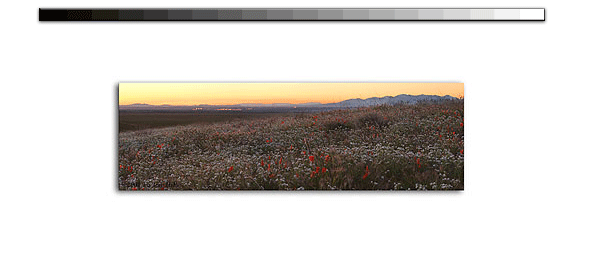|
{Note, this article was originally published in August of 2001. It was revised in January 2002}
11 July 2001
I'm writing this as two fairly significant events are unfolding in my life. Okay, one important event and one yet to be determined. The first event is I'm writing this on my iBook--a computer for those non-Mac people out there--in a campsite near Mono Lake California. The location itself doesn't offer much significance. The reason for the location is much more important--I'm moving from Cold Lake Canada to Edwards AFB USA. Mostly this wouldn't be much of an issue for someone that's used to moving every two or three years. This time is unique because Cold Lake had a significant impact on my life. I discovered photography--again--and nothing will ever be the same. The surprising contribution from being on the road is the amount of time to consider things. That's not foreign to me. I normally address issues such as the meaning of life when driving endlessly on the highways. Okay, sometimes I've been known to practice raising eyebrows independently. Anyway, this trip was highlighted by the lack of highway travel. All but 60 miles of the 3,000 mile trip were driven on what most American's call the "back-roads". Life looks a lot different on those less traveled roads. The "where for'" and "why fore's" for taking this route are worthy of their own article and I won't get into it now. Just know the countryside was significantly different and therefore promotes idle thoughts in a driver endlessly driving towards certain, more natural issues. The one I'm tackling now is the nature of a quality image. Or, the Quality of Images.
In conjunction with this trip, the second major event occurred Whether it's premature to declare the significant of this second event or not, I don't care. I expect it will be important so I'll state it here now. The event is the reading of Prising's "Zen and the Art of Motorcycle Maintenance". For those not familiar, the book address lots of philosophy but most uniquely it brings up the discussion of the classic and romantic worlds. To simplify things a bit, I'll say it discusses the worlds of the left and right sides of the brain--the technical and artistic parts of the world. The point here for this article is what brings them together to produce insightful images--Quality. It's the thing that bridges the technical and artistic aspects to make an image. Quality is what joins the technical portions with the artistic portions to bring a final image together. Take my word for now that this is true and we'll get into the "why's" later.
First, I say making images is mostly made up to two major frames of mind. You need to have the technical expertise to accomplish the task and you need to have an artistic vision to guide what you're doing. Sure, there are lots of details of what goes on in producing an image. But, if you get right down to it, these two worlds are all that's needed to make great images. The technical and artistic aspects are critical to photography. In fact, you have to have a balance of both to make the image. You can't have too much of one without the other's support when making images. If you'll notice, there are no prodigy photographers. There are no six year old wiz-kids out there making images Ansel Adams would be proud to make. Without getting too in-depth as to "why"--that's another article--I believe photography requires a maturity to balance the technical and artistic sides. There's no "Just Do It" about photography. There's a lot of learn a bunch about everything, merge it together, and then make an image. It's a lot harder I think than most other forms of art. Don't you wiz-kids artists of other media get upset with me because I might have called your art form easy. Oh no, this is just a theory and it supports my arguments so try it on for size until you're done with the article. Let me discuss what goes on into each of these worlds--artistic and technical--and how they apply to photography. The technical side contains everything an engineer would be proud to understand; exposure, shutter speeds, film use, tripods, lenses, DOF... The artistic side as the romantic stuff you'd see in any painting class; composition, diagonal lines, tension, leading lines... Some areas cross boundaries like a film's color palette I won't get into all the issues and where they belong. All you need to know now is there are two major areas required to make great images.
|
|




